Myths about teaching can hold you back
- Year 9
Loops of a parallel circuit
I can divide a parallel circuit into a set of nested series circuits.
- Year 9
Loops of a parallel circuit
I can divide a parallel circuit into a set of nested series circuits.
These resources will be removed by end of Summer Term 2025.
Switch to our new teaching resources now - designed by teachers and leading subject experts, and tested in classrooms.
These resources were created for remote use during the pandemic and are not designed for classroom teaching.
Lesson details
Key learning points
- In a parallel circuit, each loop can be traced from one end of the cell or battery to the other end.
- Each loop in a parallel circuit is equivalent to a series circuit connected to the same cell or battery.
- A parallel circuit can be split into a number of series circuits each connected to the ends of the same cell or battery.
Keywords
Series circuit - An electric circuit with one complete loop from one end of a cell or battery to the other end.
Battery - Two or more cells connected in series form a battery.
Parallel circuit - An electric circuit with more than one complete loop from one end of a cell or battery to the other end.
Potential difference - A more formal term for voltage; they can be used interchangeably.
Common misconception
Pupils are often confused about how to analyse a parallel circuit.
Emphasise the need to consider each loop of a parallel circuit as if it were a single series circuit connected to a cell or battery.
To help you plan your year 9 science lesson on: Loops of a parallel circuit, download all teaching resources for free and adapt to suit your pupils' needs...
To help you plan your year 9 science lesson on: Loops of a parallel circuit, download all teaching resources for free and adapt to suit your pupils' needs.
The starter quiz will activate and check your pupils' prior knowledge, with versions available both with and without answers in PDF format.
We use learning cycles to break down learning into key concepts or ideas linked to the learning outcome. Each learning cycle features explanations with checks for understanding and practice tasks with feedback. All of this is found in our slide decks, ready for you to download and edit. The practice tasks are also available as printable worksheets and some lessons have additional materials with extra material you might need for teaching the lesson.
The assessment exit quiz will test your pupils' understanding of the key learning points.
Our video is a tool for planning, showing how other teachers might teach the lesson, offering helpful tips, modelled explanations and inspiration for your own delivery in the classroom. Plus, you can set it as homework or revision for pupils and keep their learning on track by sharing an online pupil version of this lesson.
Explore more key stage 3 science lessons from the Resistance and parallel circuits unit, dive into the full secondary science curriculum, or learn more about lesson planning.

Equipment
Lamps, wires, 2 × 1.5 V cells connected to form a battery for class practical.
Content guidance
- Risk assessment required - equipment
Supervision
Adult supervision required
Licence
Prior knowledge starter quiz
6 Questions
Q1.Which of the following statements about the electrical leads in laboratory circuits is correct?
Q2.Which of the following is the more formal term for voltage?
Q3.Which of the following is the correct way to connect a voltmeter and an ammeter in a circuit?
Q4.Which of the following statements about the voltage in the branches of the parallel circuit shown is correct?
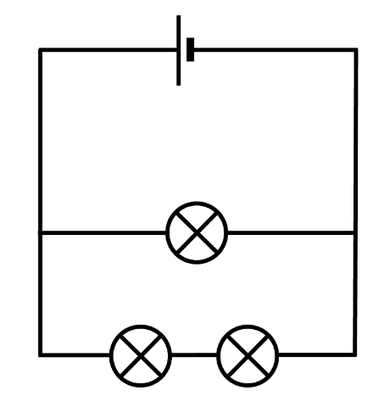
Q5.All of the lamps in the circuit shown are identical. What is the voltage across lamp 3?
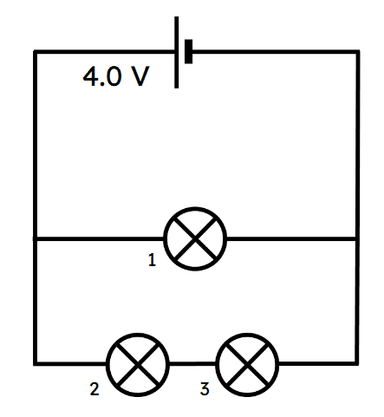
Q6.What will the reading be on voltmeters 1 and 2 in the circuit shown?
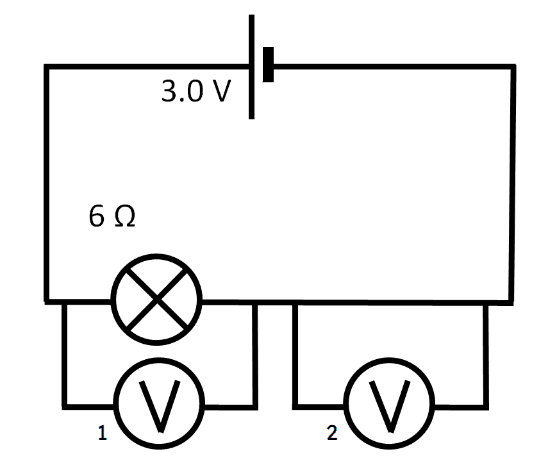
Assessment exit quiz
6 Questions
Q1.Which of the following statements about circuits are correct?
Q2.Which of the following circuits is the odd one out?
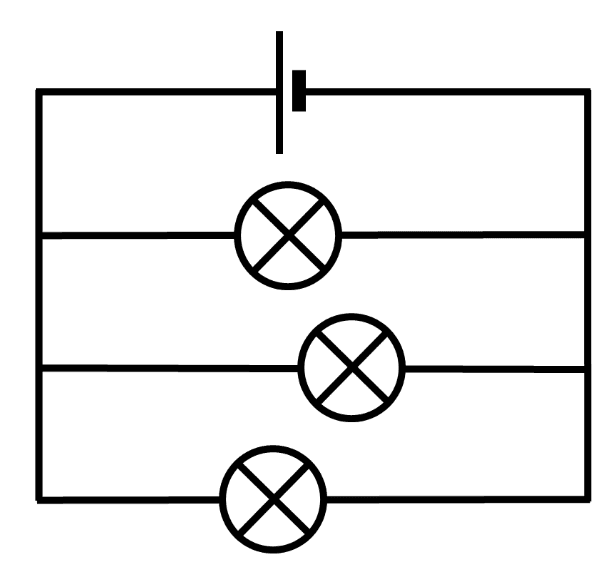
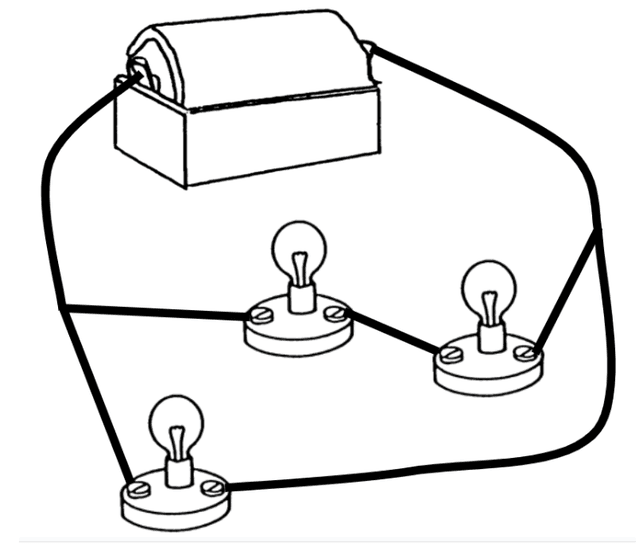
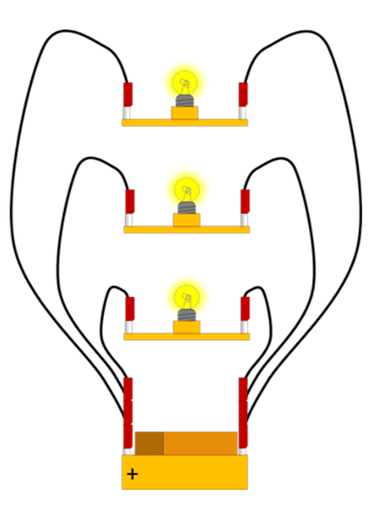
Q3.All of the lamps in the circuit shown are identical. Which of the following statements is correct?
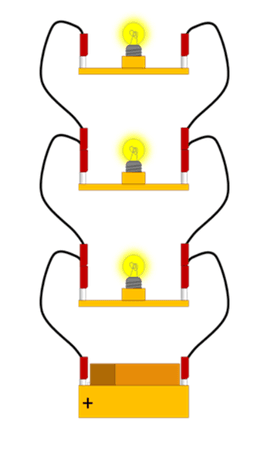
Q4.What is the voltage of a battery of four 1.5 V cells, connected in the same direction in series?



